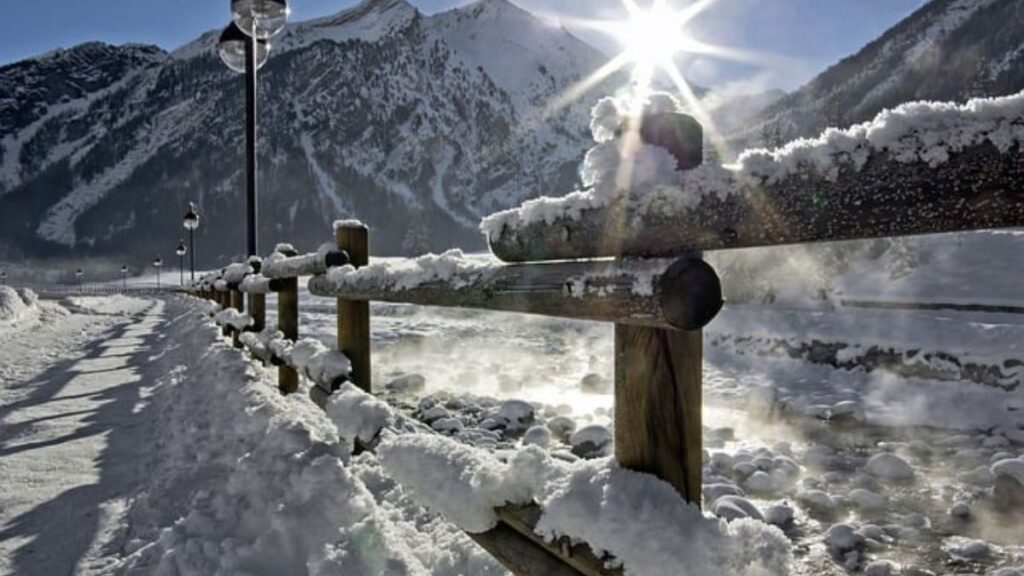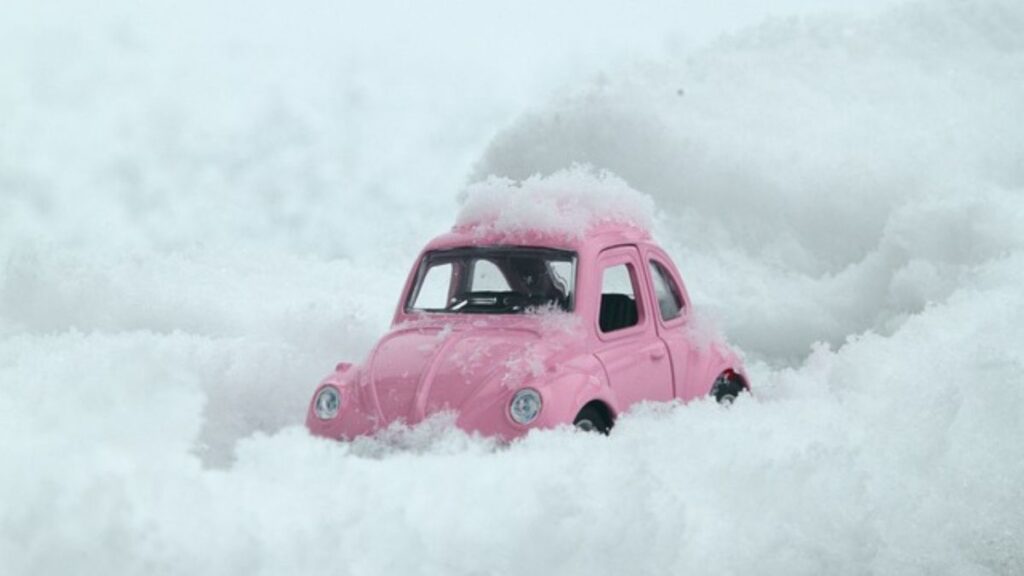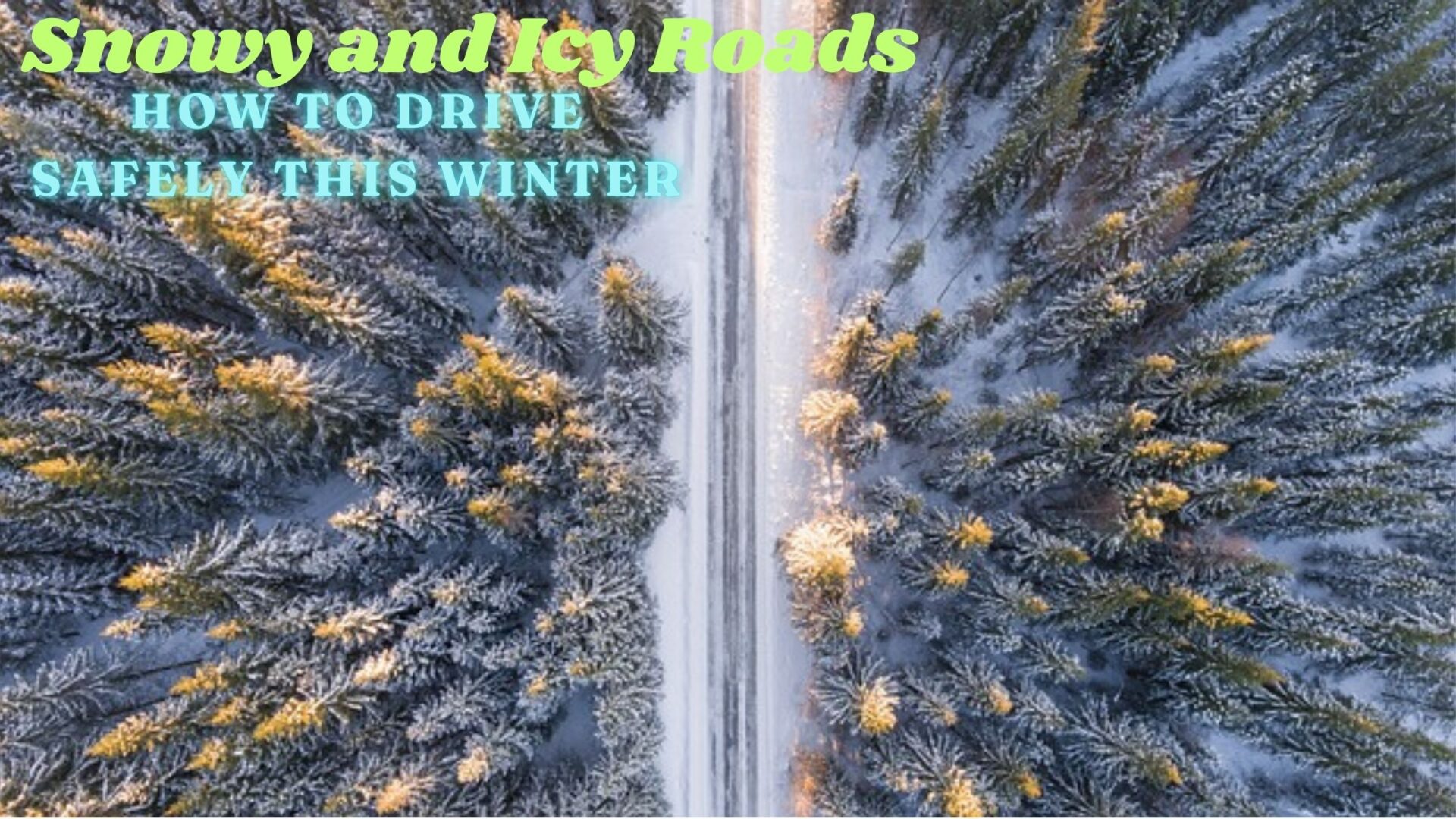Introduction:
Snowy and Icy Roads: How to Drive Safely This Winter

In the face of snowy and icy roads, winter driving presents unique challenges. Nonetheless, with appropriate preparation and knowledge, navigating winter roads safely is achievable. This article aims to provide crucial tips to assist you in mastering winter driving conditions, empowering you to maintain control and stay safe during your journeys.
How to Master Safe Winter Driving on Snowy and Icy Roads:
1. Vehicle Preparation for Winter:
- Ensure your vehicle is ready for winter conditions before the season arrives.
- Install winter tires for improved traction on snowy and icy roads.
- Check and adjust the antifreeze, windshield washer fluid, and oil for cold weather suitability.
- Have your car battery tested and replaced if necessary, as cold weather can drain it.
- Keep an emergency kit in your car, including essential items like a blanket, flashlight, shovel, ice scraper, and extra clothing.
2. Winter Driving Techniques:
- Adapt your driving habits for winter conditions.
- Reduce your speed to account for decreased traction on snowy or icy roads.
- Increase the following distance between your car and the vehicle ahead, allowing more time to stop.
- Brake gently and steadily to avoid skidding.
- Use headlights in snowy or foggy conditions to improve visibility.
3. Handling Skids:
- Stay calm if your car starts to skid.
- Steer in the direction you want the front of the car to go, avoiding overcorrection.
- Do not brake during a skid, as it can worsen the situation. Instead, take your foot off the accelerator and steer gently.
4. Staying Informed:
- Check the weather and road conditions before heading out.
- Use weather apps for current and forecasted conditions.
- Listen to local traffic reports for information on road closures and accidents.
- Utilize GPS systems that provide real-time updates on road conditions.
5. Route Planning for Winter:
- Plan your route to avoid dangerous areas and ensure safety.
- Prioritize main roads and highways, as they are more likely to be plowed and salted.
- If possible, avoid routes with steep hills or sharp curves, as these can be hazardous in icy conditions.
6. Communication and Safety:
- Inform someone of your travel route and estimated arrival time, especially if you’re venturing into remote areas.
How to Enhance Visibility and Safety While Driving in a Snowstorm:

- Adjust Lighting: Use headlights and fog lights to enhance visibility. Avoid using high beams.
- Clear Snow: Before driving, clear snow from all windows, mirrors, headlights, and taillights.
- Slow Down and Increase Distance: Reduce speed to match road conditions and increase following distance.
- Utilize Wipers and Defrosters: Maintain visibility with functioning windshield wipers and defrosters.
- Stay in Your Lane: Follow tracks of the preceding vehicle for better traction and visibility.
- Watch for Signs and Markings: Pay attention to road signs and markings, even in reduced visibility.
- Be Cautious of Others: Be wary of other drivers, anticipating potential loss of control.
- Pull Over if Needed: Find a safe spot to pull over if visibility is extremely poor.
- Use Hazard Lights: Consider utilizing hazard lights if driving significantly slower than traffic.
- Stay Informed: Check weather and road conditions before traveling, adjusting your route or schedule if necessary.
By implementing these strategies, you can significantly improve your visibility and ensure a safer driving experience in snowstorms.
Driving Techniques for Preventing Accidents on Icy Roads:
- Reduce Speed: Drive much slower than normal to increase reaction time and reduce the risk of losing control.
- Maintain More Distance: Leave ample space between your vehicle and others to allow sufficient stopping distance.
- Avoid Sudden Maneuvers: Accelerate, decelerate, and steer smoothly to prevent skidding on ice.
- Brake Gently: Apply gentle pressure to the brake pedal, avoiding sudden braking that can lock wheels.
- Steer into a Skid: If a skid occurs, remain calm and steer in the direction of the skid to regain control.
- Understand Your Braking System: Know if your vehicle has ABS and adjust your braking technique accordingly.
- Use Winter Tires: Consider switching to winter tires for improved traction on icy surfaces, especially in snow-prone areas.
- Check Conditions: Stay informed about weather and road conditions before your journey, and delay travel if conditions are hazardous.
- Stay Focused: Minimize distractions like phone use and control adjustments while driving on icy roads.
- Practice in Controlled Settings: If possible, practice driving on icy roads in a safe environment to familiarize yourself with vehicle handling.
By implementing these techniques and exercising caution, drivers can significantly minimize the likelihood of accidents while navigating icy road conditions.
Essential Kit for Winter Car Emergencies
To ensure a safe and comfortable winter travel experience, it’s crucial to have a well-equipped car emergency kit. Here are the essential items you should include:

- Warm Clothing and Blankets: Pack extra hats, gloves, scarves, and thermal blankets to provide warmth in case of being stranded.
- Non-Perishable Food and Water: Include high-energy snacks like granola bars, nuts, dried fruit, and bottled water for sustenance.
- First Aid Kit: Carry a basic first aid kit containing bandages, antiseptic wipes, pain relievers, and any necessary medications.
- Flashlight and Extra Batteries: Pack a flashlight for nighttime or low-light conditions, along with extra batteries to ensure visibility.
- Jumper Cables: Keep jumper cables on hand to jump-start your vehicle if the battery fails.
- Ice Scraper and Snow Brush: Clear snow and ice from your windshield, windows, and lights with an ice scraper and snow brush.
- Shovel: Use a small, foldable shovel to dig your car out of snow if necessary.
- Cat Litter or Sand: For added traction, keep cat litter or sand in your kit to help your tires grip on snow and ice.
- Emergency Flares or Reflective Triangles: Make your vehicle visible to other drivers with emergency flares or reflective triangles if you are stranded on the roadside.
- Tow Rope or Chain: A tow rope or chain can be used to tow your vehicle if needed.
- Portable Phone Charger: Keep your phone charged with a portable charger in case you need to call for assistance.
- Multi-Tool or Basic Tool Kit: Carry a multi-tool or a basic tool kit for minor repairs or adjustments to your vehicle.
- Windshield Washer Fluid: Pack extra windshield washer fluid to maintain a clear windshield.
- Hand Warmers: Disposable hand warmers provide additional warmth in extreme cold.
- Fire Extinguisher: Include a small, portable fire extinguisher for emergency situations.
- Road Map: Bring a physical road map as a backup in case your GPS or phone malfunctions.
- Reflective Vest: Wear a reflective vest to enhance your visibility if you need to leave your vehicle.
By keeping these essential items in your car during winter months, you’ll be better equipped to handle emergencies and ensure your safety on your winter travels.
Conclusion
Navigating snowy and icy roads can be intimidating, but with proper preparation and mindful driving habits, you can ensure a safe winter driving experience. Be ready to adapt to varying conditions, exercise caution behind the wheel, and stay informed about road conditions to optimize your safety on the road.
References
- AAA. (2023). Winter Driving Tips. Retrieved from AAA
- National Highway Traffic Safety Administration. (2023). Winter Driving Safety. Retrieved from NHTSA
- Weather.gov. (2023). Winter Weather Safety. Retrieved from National Weather Service







